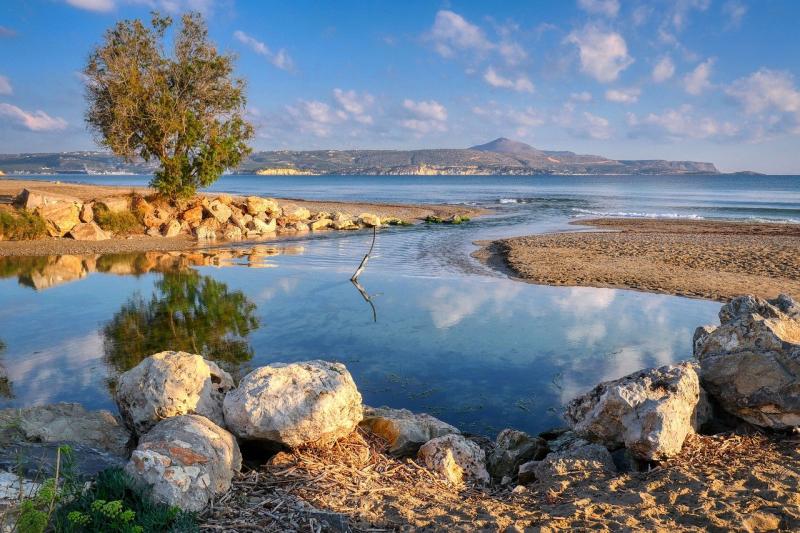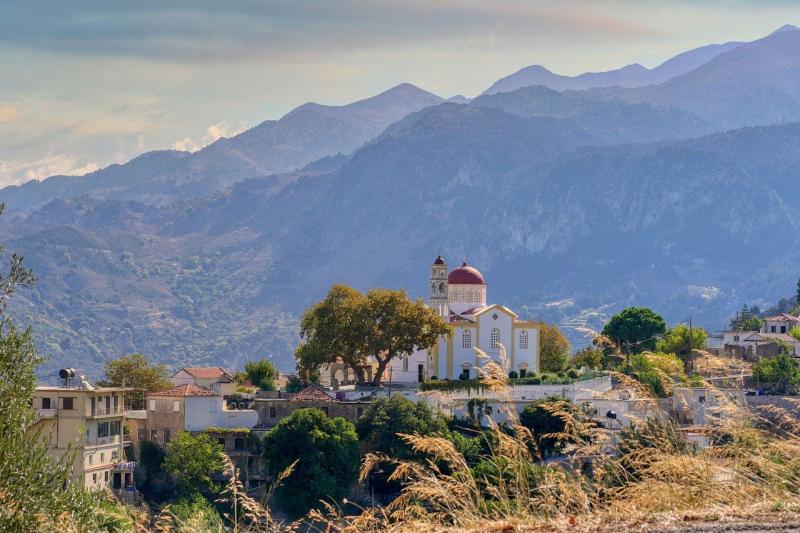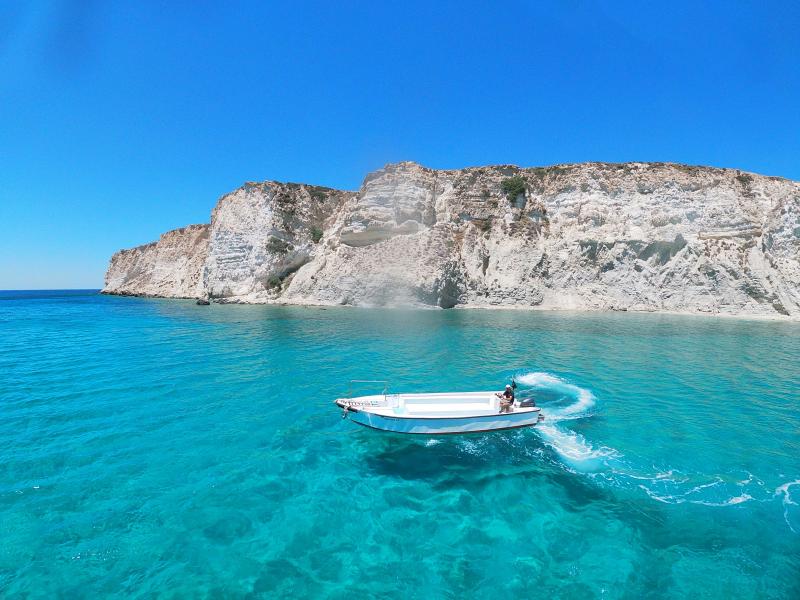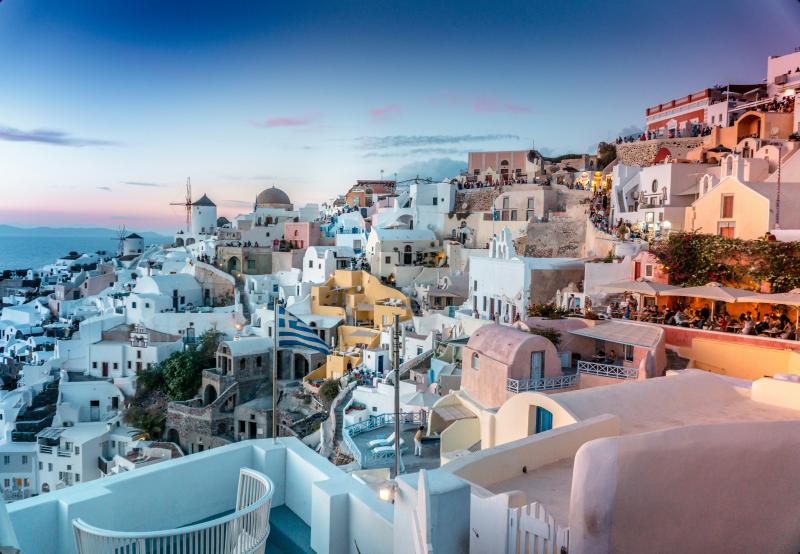View It
Visit It
Crete
Greece
Visit Crete
Crete, the largest of the Greek islands, is a captivating blend of ancient ruins, vibrant cities, and breathtaking landscapes, making it a top destination for travelers seeking a comprehensive experience of Greek culture, history, and natural beauty. The island's diverse geography ranges from stunning sandy beaches and rugged mountains to lush valleys and steep gorges, offering activities for every type of traveler. Whether you're a history enthusiast eager to explore the remnants of past civilizations, a nature lover looking to hike through awe-inspiring terrains, or a beachgoer searching for a tranquil spot by the sea, Crete promises an unforgettable visit.
The island's rich historical tapestry is most famously represented by the Palace of Knossos, just outside the capital city of Heraklion. This archaeological site dates back to the Minoan civilization, which flourished around 2000 to 1450 BC, and is said to be the labyrinth of the mythical Minotaur. A tour through these ancient ruins offers a glimpse into a sophisticated society that once dominated the Aegean. Beyond Knossos, the island's history unfolds in layers of Greek, Roman, Byzantine, Venetian, and Ottoman influences, visible in the architecture of its towns and cities, and in the small, remote villages that dot the landscape.
Crete's natural environment also offers a wealth of experiences. The Samaria Gorge, a World Biosphere Reserve, provides a challenging yet rewarding trek that draws thousands of nature enthusiasts each year. Stretching over 16 kilometers, it is one of the longest gorges in Europe, culminating at the Libyan Sea in the quaint village of Agia Roumeli. For a more relaxed experience, the island's coastline is dotted with a myriad of beaches ranging from the expansive sands of Elafonissi with its turquoise waters to the secluded bays of Balos Lagoon. Each beach has its unique charm and character, often backed by tavernas where you can enjoy local Cretan cuisine, which is renowned for its freshness and flavor, featuring ingredients like olive oil, herbs, and fresh seafood.
Visiting Crete is not just a journey through a scenic island, but a profound immersion into a culture where hospitality is a way of life. The Cretans are famously welcoming, often inviting visitors to partake in local festivities and sample homemade raki or wine. Each visit promises not only relaxation and scenic beauty but also a deep connection with the island's spirited culture and history. Whether wandering through the bustling markets of Chania, enjoying the serenity of a mountain village, or basking in the sun at a seaside café, Crete offers a slice of Greek life that is both enriching and enchanting.
Crete Monthly Weather Conditions
LOW
TEMP
HIGH
TEMP
DAYS OF PRECIP.
January
50°F
57°F
11
February
50°F
59°F
5
March
50°F
63°F
5
April
57°F
68°F
5
May
57°F
75°F
5
June
68°F
77°F
3
July
73°F
86°F
1
August
73°F
86°F
1
September
64°F
77°F
5
October
59°F
75°F
5
November
57°F
64°F
8
December
50°F
57°F
12
Need to Know Before You Go To Crete
Find your Next Adventure in Crete
Explore Crete
- Birthplace of Zeus
According to Greek mythology, Crete is the birthplace of Zeus, the king of the Greek gods. The Dikteon Cave, also known as Psychro Cave, and the Ideon Cave are both said to be his birthplace.
- Minoan Civilization
Crete was the center of the Minoan civilization (circa 2700–1420 BC), which is considered the earliest recorded civilization in Europe. The palace of Knossos, near the capital city of Heraklion, is the most significant archaeological site from this period.
- Elafonisi Beach
Known for its pink sand beaches, Elafonisi is a protected nature reserve. The pink color comes from the crushed shells of tiny creatures called foraminifera.
- Samaria Gorge
One of the longest gorges in Europe, the Samaria Gorge is a World Biosphere Reserve. It stretches over 16 kilometers and offers a spectacular hiking experience.
- Cretan Diet
The traditional Cretan diet is renowned for its health benefits and longevity of its people. It is a variant of the Mediterranean diet, featuring olive oil, fresh vegetables, fruits, legumes, and fish.
- Venetian Influence
From 1205 to 1669, Crete was ruled by the Venetians, which is evident from the many Venetian fortresses and buildings still standing, particularly in the cities of Chania and Rethymno.
- Cretan Music and Dance
Traditional Cretan music and dance are integral to local culture, with the lyra being the most popular traditional instrument. Dances like the Pentozali offer a lively and energetic display of Cretan spirit.
- Lefka Ori (White Mountains)
This mountain range is named for the white limestone that covers its peaks and the snow that caps them well into spring. The White Mountains also contain over 50 gorges and are a haven for hikers and nature lovers.
- The Island of Spinalonga
Originally a Venetian fortress, Spinalonga was later used as a leper colony from 1903 to 1957. It is one of Crete’s most visited historical sites, partly due to its haunting past and its feature in literature and television series.
- Cretan Hieroglyphs
The ancient Minoans developed their own form of writing, which includes hieroglyphics that remain undeciphered to this day. These scripts are considered a significant mystery in the field of archaeology.
Featured Picture Gallery

Spend the Day Exploring Crete Lagoons

Visit the Village of Lakkoi

Take a Beach Day and Explore the Crete Waters
Explore Similar Locations
Santorini

Tuscany

Dalmatia

Greek Islands

